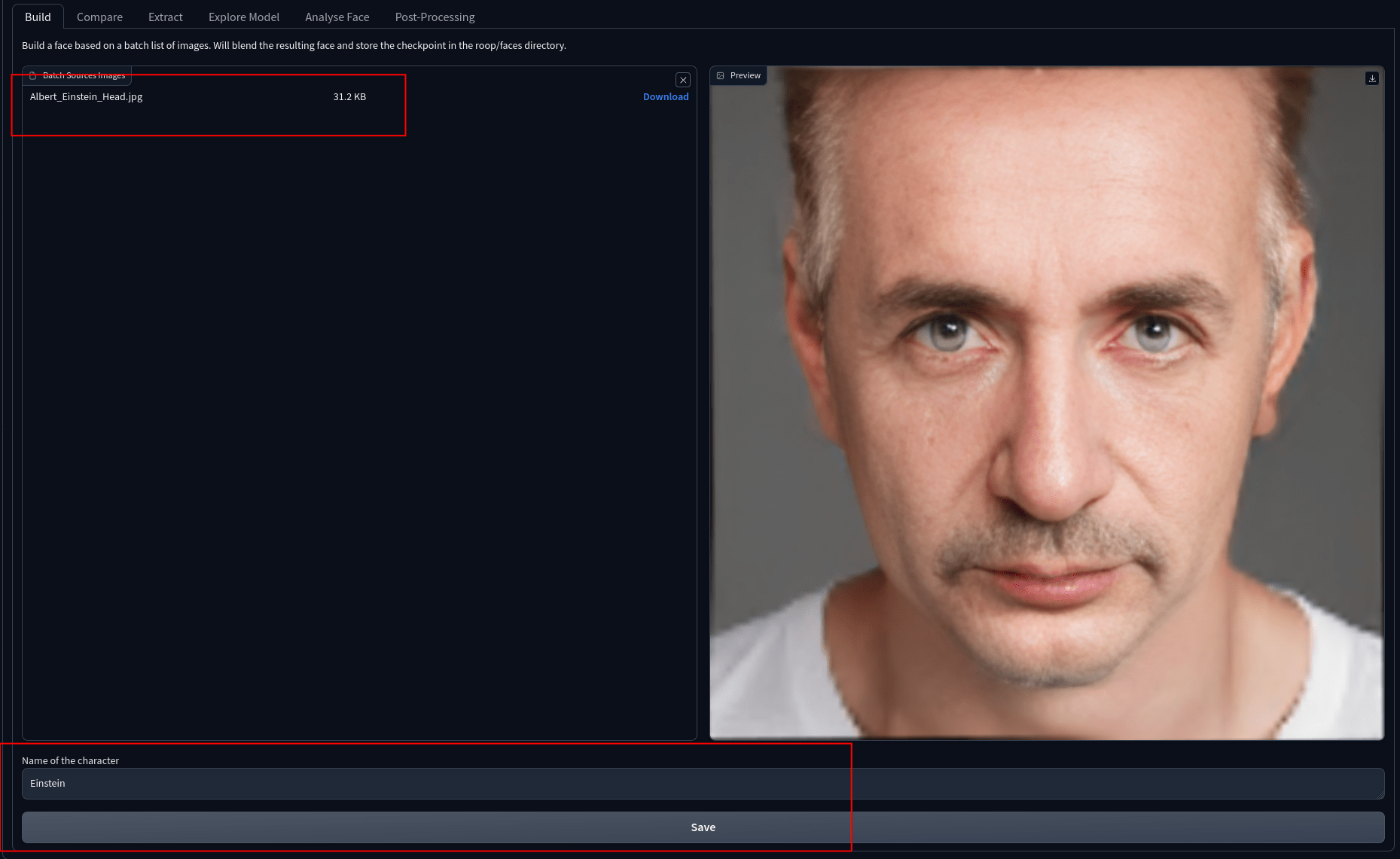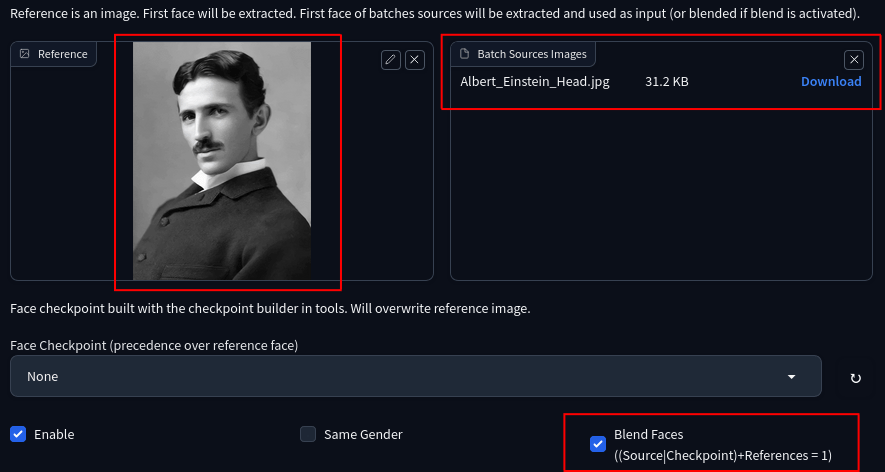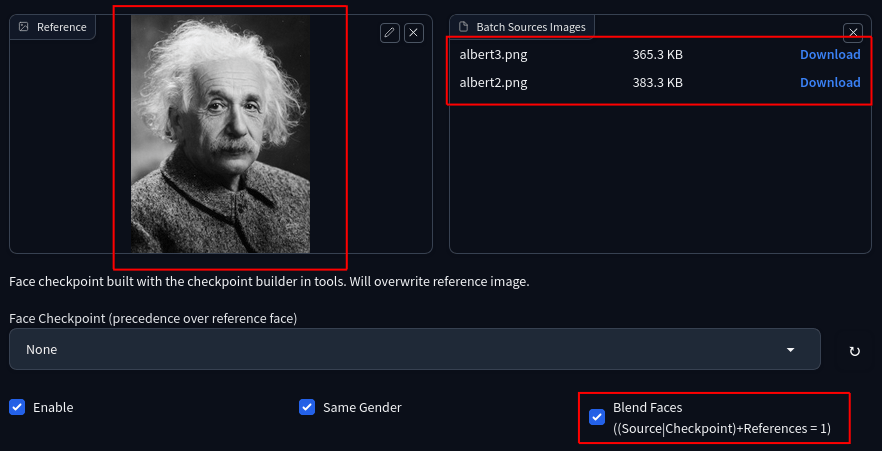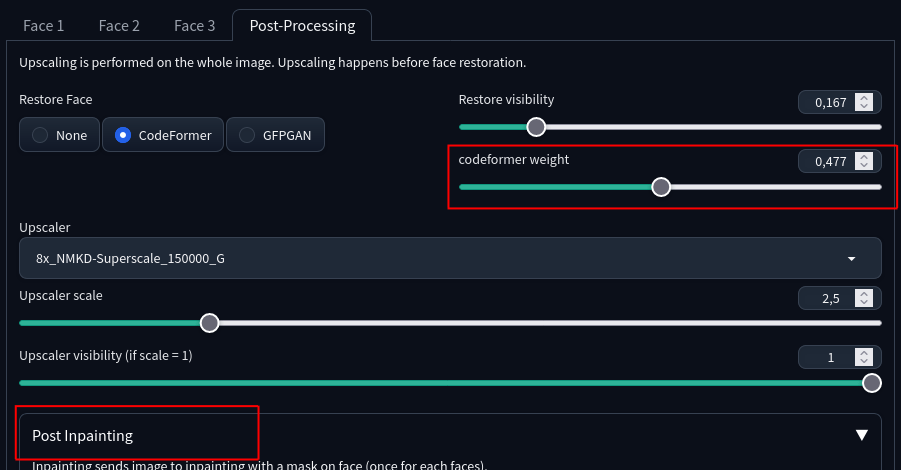Features
- Face Unit Concept: Similar to controlNet, the program introduces the concept of a face unit. You can configure up to 10 units (3 units are the default setting) in the program settings (sd).

-
Vladmantic and a1111 Support
-
Batch Processing
-
Inpainting: supports “only masked” and mask inpainting.
-
Performance Improvements: The overall performance of the software has been enhanced.
-
FaceSwapLab Tab providing various tools.

- FaceSwapLab Settings: FaceSwapLab settings are now part of the sd settings. To access them, navigate to the sd settings section.

- Face Reuse Via Checkpoints: The FaceTools tab now allows creating checkpoints, which facilitate face reuse. When a checkpoint is used, it takes precedence over the reference image, and the reference source image is discarded.


- Gender Detection: The program can now detect gender based on faces.

- Face Combination (Blending): Multiple versions of a face can be combined to enhance the swapping result. This blending happens during checkpoint creation.


- Preserve Original Images: You can opt to keep original images before the swapping process.

- Multiple Face Versions for Replacement: The program allows the use of multiple versions of the same face for replacement.

- Face Similarity and Filtering: You can compare faces against the reference and/or source images.

- Face Comparison: face comparison feature.

- Face Extraction: face extraction with or without upscaling.

- Improved Post-Processing: codeformer, gfpgan, upscaling.

- Post Inpainting: This feature allows the application of image-to-image inpainting specifically to faces.


- Upscaled Inswapper: The program now includes an upscaled inswapper option, which improves results by incorporating upsampling, sharpness adjustment, and color correction before face is merged to the original image.

- API with typing support :
import base64
import io
import requests
from PIL import Image
from client_utils import FaceSwapRequest, FaceSwapUnit, PostProcessingOptions, FaceSwapResponse, pil_to_base64
address = 'http:/127.0.0.1:7860'
# First face unit :
unit1 = FaceSwapUnit(
source_img=pil_to_base64("../../references/man.png"), # The face you want to use
faces_index=(0,) # Replace first face
)
# Second face unit :
unit2 = FaceSwapUnit(
source_img=pil_to_base64("../../references/woman.png"), # The face you want to use
same_gender=True,
faces_index=(0,) # Replace first woman since same gender is on
)
# Post-processing config :
pp = PostProcessingOptions(
face_restorer_name="CodeFormer",
codeformer_weight=0.5,
restorer_visibility= 1)
# Prepare the request
request = FaceSwapRequest (
image = pil_to_base64("test_image.png"),
units= [unit1, unit2],
postprocessing=pp
)
result = requests.post(url=f'{address}/faceswaplab/swap_face', data=request.json(), headers={"Content-Type": "application/json; charset=utf-8"})
response = FaceSwapResponse.parse_obj(result.json())
for img, info in zip(response.pil_images, response.infos):
img.show(title = info)